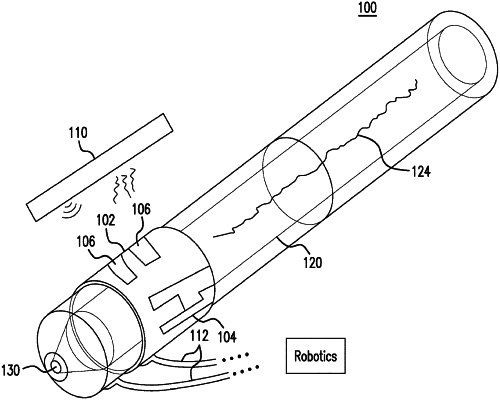| CPC B29C 64/209 (2017.08) [B29C 64/118 (2017.08); B29C 64/295 (2017.08); B29C 64/386 (2017.08); B33Y 30/00 (2014.12); B33Y 50/00 (2014.12); B33Y 50/02 (2014.12)] | 7 Claims |

|
1. A fused deposition printhead for additive manufacturing, capable of receiving a solid print material at an input thereof for extrusion as a liquid from an output thereof, comprising:
a heat-conductive nozzle having a non-heat-conductive chamber therewithin configured to receive the solid print material at an input thereof and extruding the liquid at an output thereof;
a deposited insulative coating on an outermost surface of the heat-conductive nozzle;
a heat-conductive sensor under the deposited insulative coating and connected to a portion of the heat-conductive nozzle, and the heat-conductive sensor configured to transmit information regarding the portion of the heat-conductive nozzle through the insulative coating;
a resistive wire heating element wound around both the insulative coating and the heat-conductive nozzle and configured to progressively heat the solid into the liquid between the input and the output; and
a non-heat-conducting sheath enclosing the insulative coating, the heat-conductive nozzle and the heat-conductive sensor, and having therein embedded the resistive wire heating element; and
a low-emissivity material partially, substantially, or completely surrounding the outside of the non-heat-conducting sheath and configured to reflect infrared energy toward the heat-conductive nozzle.
|